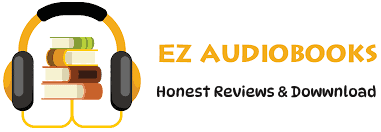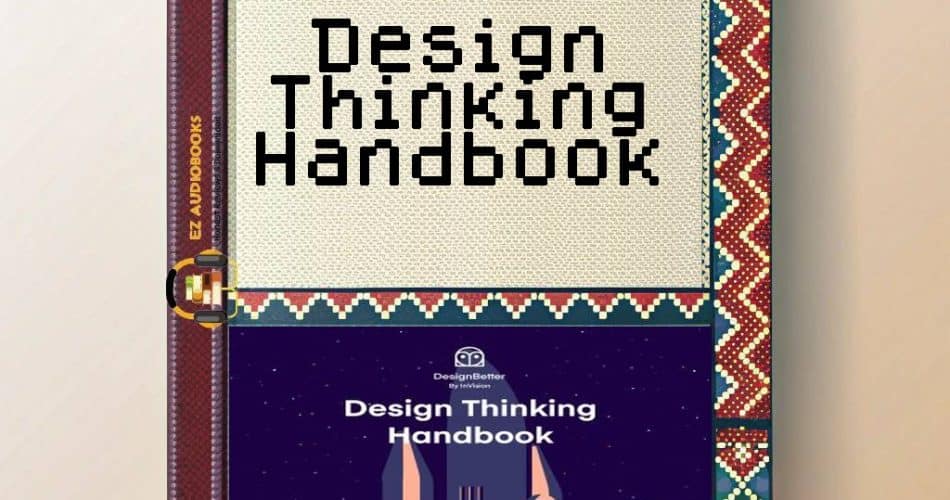Audiobook Sample
Listen to the sample to experience the story.
Please wait while we verify your browser...
- Title: Design Thinking Handbook
- Author: Eli Woolery
- Narrator: Joey Schaljo
- Length: 0.059236111
- Version: Abridged
- Release Date: 26-Jul
- Publisher: Findaway Voices
- Genre: Business & Economics, Management & Leadership, Science & Technology, HR & Office Administration, Computers
- ISBN13: 9.78E+12
As a literature professor with a passion for dissecting narratives across mediums, I recently immersed myself in the *Design Thinking Handbook* audiobook by Eli Woolery, narrated with clarity and warmth by Joey Schaljo. What fascinates me most is how this work transcends its genre—Business & Economics, Management & Leadership, Science & Technology—merging practical problem-solving with the deeply human art of empathy. Through a cultural lens, it’s a text that resonates with my academic journey and personal experiences, offering a refreshing take on innovation that feels both scholarly and accessible.
### Initial Impressions and Personal Connection
From the moment Joey Schaljo’s voice filled my ears, I was transported back to my Contemporary Fiction seminar at UC Berkeley, where we debated how medium shapes meaning. We once dissected *Cloud Atlas* across its book, ebook, and audiobook forms, marveling at how audio narration could amplify a story’s emotional depth or shift its pacing. Listening to the *Design Thinking Handbook*, I found a similar revelation: this isn’t just a manual for designers or managers—it’s a narrative about human connection, reframed for the digital age. Woolery’s framework, rooted in Stanford’s d.school philosophy, echoes my own intellectual curiosity about how storytelling adapts to new contexts, whether literary or technological.
This audiobook also stirred a memory from my time as a visiting professor in Tokyo. While exploring Haruki Murakami’s *Kafka on the Shore*, I noticed how language altered its magical realism—Japanese lent it fluidity, while English sharpened its edges. Similarly, Woolery’s design thinking principles shift depending on how you engage with them. Hearing them aloud, narrated with Schaljo’s steady cadence, emphasizes their universality, much like a well-translated tale crossing cultural borders.
### Key Themes and Content Analysis
At its core, the *Design Thinking Handbook* champions empathy as the heartbeat of innovation—a concept that resonates deeply with my studies in cross-cultural narratives. Woolery outlines a thinking-based framework that moves beyond methodology, blending problem-solving with a profound understanding of human needs. The audiobook unfolds in layers: it teaches you to reframe perspectives, challenge assumptions, and prototype solutions, all while urging you to observe users’ interactions for authentic feedback. It’s a process that mirrors literary analysis—peeling back the onion, as Mark Manson might say, to reveal uncomfortable yet transformative truths.
Through a cultural lens, I see parallels to Eastern philosophies of mindfulness and Western pragmatism. Woolery’s insistence on reframing one’s point of view recalls the Buddhist concept of shifting perception to find clarity, while his prototyping ethos aligns with iterative scientific inquiry. This fusion makes the audiobook a compelling listen for anyone in HR, office administration, or tech-driven fields—sectors where empathy is often undervalued. Yet, it’s not just for professionals; it’s for anyone who’s ever wrestled with a problem and sought a more insightful path forward.
### Narrator Performance and Audio Quality
Joey Schaljo’s narration is a standout feature of this audiobook experience. His voice is crisp yet empathetic, striking a balance that mirrors Woolery’s blend of practicality and humanity. Each chapter feels like a lecture from a trusted mentor—measured, engaging, and devoid of jargon-heavy monotony. The audio quality is pristine, with no distracting background noise, making it ideal for focused listening during a commute or a quiet evening. Schaljo’s pacing enhances the content’s accessibility, giving you space to absorb complex ideas without feeling overwhelmed. For a text grounded in design and technology, his warm delivery humanizes the material, turning abstract concepts into a relatable dialogue.
### Strengths and Limitations
The audiobook’s strengths lie in its clarity and applicability. Woolery distills design thinking into digestible steps—empathize, define, ideate, prototype, test—without sacrificing depth. The emphasis on observing users’ interactions as the ultimate feedback loop is a gem, especially for leaders in management or tech who might otherwise prioritize metrics over people. Schaljo’s narration amplifies this strength, making the listening experience feel like a masterclass in innovative thinking.
Yet, there are limitations. For listeners expecting a step-by-step playbook, the handbook’s conceptual focus might feel abstract. It thrives on principles rather than granular tactics, which could frustrate those in HR or office administration seeking immediate tools. Additionally, while Schaljo’s narration is excellent, his tone remains consistent throughout, missing opportunities to heighten drama during key insights. A slight variation in inflection could have elevated the audiobook free from good to unforgettable.
### Comparisons with Similar Works
This audiobook invites comparison to Mark Manson’s *The Subtle Art of Not Giving a F*ck*, another genre-bender that prioritizes pragmatism over platitudes. Where Manson urges us to choose our struggles, Woolery asks us to choose our perspectives—a subtle but profound shift. Both reject sugar-coated optimism, though Woolery’s tone is less abrasive, leaning into empathy where Manson leans into bluntness. For a more academic parallel, Jonathan Haidt’s *The Happiness Hypothesis* explores happiness through science and philosophy, much like Woolery grounds design in observation and iteration. Yet, the *Design Thinking Handbook* stands apart for its actionable framework, tailored to business and tech contexts.
### Recommendations for Listeners
I’d recommend this audiobook to intellectually curious minds—students of management, tech enthusiasts, or even literature buffs like myself who enjoy seeing narrative principles applied beyond fiction. It’s perfect for those who value process over quick fixes and appreciate the interplay of empathy and innovation. If you’re in HR or office administration, pair it with practical case studies to bridge its conceptual gaps. And for the best listening experience, savor it in a quiet space where Schaljo’s voice can guide your reflections.
### Personal Reflection
This reminds me of when I first encountered digital storytelling as a TEDx speaker. I argued that technology doesn’t just change how we tell stories—it changes how we think. Woolery’s handbook proves this: design thinking isn’t just a tool; it’s a mindset that echoes the evolution of narrative itself. Listening to it felt like peeling back layers of my own academic onion, revealing how empathy, a cornerstone of literature, drives innovation too. It’s a rare work that bridges my worlds—literary theory and digital humanities—leaving me both inspired and introspective.
### Final Thoughts
The *Design Thinking Handbook* audiobook, available as a free download via platforms like Audiobooks.com, is a gem worth exploring. Eli Woolery’s insights, coupled with Joey Schaljo’s narration, offer a listening experience that’s as thought-provoking as it is practical. It’s not flawless—its abstract nature and steady tone won’t suit every taste—but its strengths outweigh its shortcomings. For anyone seeking to reframe their approach to challenges, this audiobook free offers a masterclass in empathy-driven innovation.
With appreciation for stories that shape our minds,
Prof. Emily Chen

